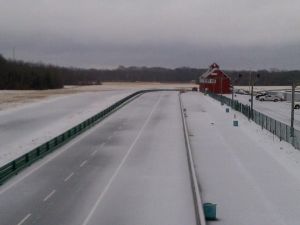A lot of us have been dealing with colder-than-usual temperatures lately. In fact, this past weekend’s winter weather dropped nine inches of snow on VIR, and the Chin Motorsports event there had to be postponed. It was quite a surprise, since here in Charlotte we only got a couple of inches at best, and it all melted the next day!
With spring right around the corner, a lot of us are already getting on track for the season. VIR officials are preparing for a big SCCA race this weekend, so here are a few tips to consider when you’re racing in colder temperatures.
Warm up your engine: As you prepare for each on-track session, think about the fluid temperatures in your car. Did you warm up your car already? If you’re putting on your belts and getting settled in, go ahead and start up your car so it can get warmed up. It’s important to see at least 160-degree water temperature and a similar oil temp prior to using your engine’s full rpm range. Remember that it will take extra time to warm up in cold temperatures, so you’ll have to start your routine earlier than usual.
Maintain proper temperatures: In many cars, the cooling systems can be extremely efficient in cooler weather, which means they can actually reduce water temperature once you’re on track. Think about putting tape in the front grill to block off some of the cooling surface area so you can keep your car’s temperature in the proper range. This technique will be especially helpful in the colder morning sessions.
Monitor brake temperatures: And don’t forget, if you have brake cooling, then your brakes need the same attention! They may not need full cooling efficiency when it’s cold out, so you may want to tape off the brake-cooling duct, too. A symptom of overly efficient brake cooling is if you’re getting a pedal shudder, which means the materials in your brakes are heating up and cooling off too quickly.
Give your tires time: Consider the track temperature, especially on those cool mornings. It’s going to take an extra lap or two for your tire temps to come up to optimal operating range. Be cautious and don’t rush it! You can even add an extra pound of air to help with the initial low pressures, then bleed it off later once the tires come up to operating temp or prior to the next run when things have warmed up some.




